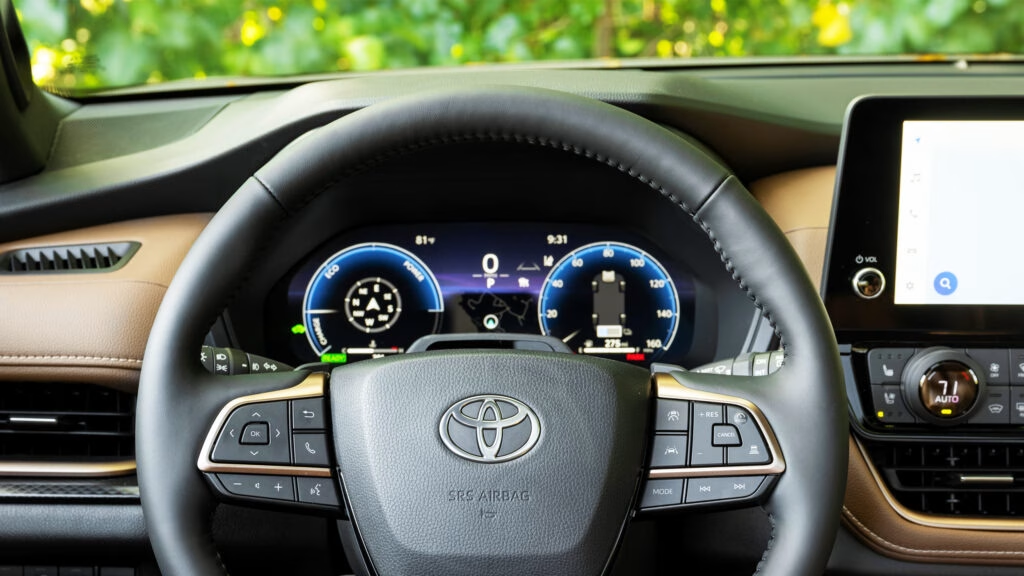Why Are Nearly 600,000 Toyota and Lexus Vehicles Being Recalled?
If you drive a late-model Toyota or Lexus, you might want to check your mailbox soon. Toyota has announced a recall affecting approximately 591,000 vehicles in the US, all due to a glitch that can cause the digital instrument cluster—the main dashboard display—to suddenly go dark. Imagine cruising down the highway and, out of nowhere, your speedometer, fuel gauge, and warning lights vanish. Not exactly the kind of surprise you want behind the wheel.
The issue centers around a 12.3-inch digital display found in a wide range of 2023–2025 Toyota and Lexus models. According to Toyota, this screen may fail to turn on at startup or, more worryingly, could go blank while you’re driving. That means you could lose access to critical information like speed, fuel level, and warning indicators. The National Highway Traffic Safety Administration (NHTSA) has flagged this as a safety risk, as a blank dash can increase the likelihood of a crash or injury.
Which Toyota and Lexus Models Are Impacted by the Recall?
The recall is broad, but not every single vehicle from the affected model lines is included. Here’s a quick rundown of the models and years involved:
Lexus: LS (2024–2025), RX (2025), TX (2024–2025)
Toyota: 4Runner (2025), Camry (2025), Crown (2023–2025), Crown Signia (2025), GR Corolla (2023–2025), Grand Highlander (2024–2025), Highlander (2023–2025), RAV4 (2023–2025), RAV4 Plug-In Hybrid (2025), RAV4 Prime (2023–2024), Tacoma (2024–2025), Venza (2023–2024)
It’s worth noting that only certain vehicles within these model lines are affected. For example, just seven Toyota 4Runners and three Lexus LS500h sedans are included, while more than 113,000 Toyota RAV4s and over 33,000 Lexus TX SUVs are on the list. If you’re unsure whether your car is part of the recall, you can check your VIN on the official Toyota or NHTSA recall websites.
What’s Actually Happening With the Digital Dash?
Let’s get a bit technical for a second. The root of the problem is a software fault in the digital instrument cluster. When the system fails, the display may not power up when you start the car, or it could suddenly shut off while you’re driving. Either way, you’re left with a blank screen and no access to vital driving information.
This isn’t just an inconvenience. A 2023 study from the Insurance Institute for Highway Safety (IIHS) found that drivers rely heavily on digital displays for real-time feedback, especially as vehicles become more tech-centric. Losing that information, even briefly, can lead to confusion, missed warnings, and delayed reactions—none of which are good news on a busy road.
How Will Toyota and Lexus Fix the Problem?
Toyota will begin notifying owners by mid-November. If your vehicle is affected, you’ll be asked to bring it to a dealership for a free fix. Depending on the situation, technicians will either update the instrument cluster’s software or replace the entire unit with an improved version.
The process is designed to be straightforward. Most software updates can be completed in under an hour, while a full replacement may take a bit longer. Toyota and Lexus are covering all costs, so there’s no out-of-pocket expense for owners.
Is This Part of a Larger Pattern With Toyota Recalls?
This isn’t the first time Toyota has had to address tech-related issues in its newer vehicles. Earlier this month, the company recalled over 94,000 Toyota bZ4X, Subaru Solterra, and Lexus RZ models due to a separate problem with the HVAC system that could cause the heater and defroster to stop working. And just this year, Toyota recalled more than 400,000 Tundra trucks for a transmission issue that could cause unintended movement.
While recalls are never ideal, they’re also not uncommon as vehicles become more complex. According to NHTSA data, the number of recalls related to electronic systems has risen sharply over the past decade. As automakers pack more features into their cars, the potential for bugs and glitches increases. The upside? Manufacturers are generally quick to respond and fix these issues, especially when safety is involved.
What Should You Do If Your Car Is Affected?
First, don’t panic. If your dash hasn’t gone blank, you’re not in immediate danger, but it’s important to get the fix done as soon as possible. Here’s what you can do:
1. Check your VIN: Visit the Toyota or NHTSA recall website to see if your vehicle is included.
2. Watch for a recall notice: Toyota will mail notifications to affected owners by mid-November.
3. Schedule a service appointment: Contact your local dealer to arrange the repair once you’ve received your notice.
If you experience a blank display before your appointment, pull over safely and restart your vehicle. If the problem persists, contact your dealer immediately. Don’t ignore warning signs—your safety comes first.
What Does This Mean for the Future of Car Tech?
This recall is a reminder that as cars become more like rolling computers, software reliability is just as crucial as mechanical reliability. Automakers are investing heavily in quality control and cybersecurity, but glitches can still slip through. The good news? Most issues can now be fixed with a software update, much like your smartphone.
Industry experts predict that over-the-air (OTA) updates will soon become the norm, allowing manufacturers to patch bugs remotely without a trip to the dealership. Tesla and a few others already do this, and Toyota has signaled it’s moving in that direction. For now, though, recalls like this are a necessary step in keeping drivers safe as technology evolves.
The big takeaway? Car ownership in the digital age isn’t about perfection—it’s about smarter adjustments. Start with one change this week—like checking your VIN or scheduling that recall appointment—and you’ll likely spot the difference by month’s end.

